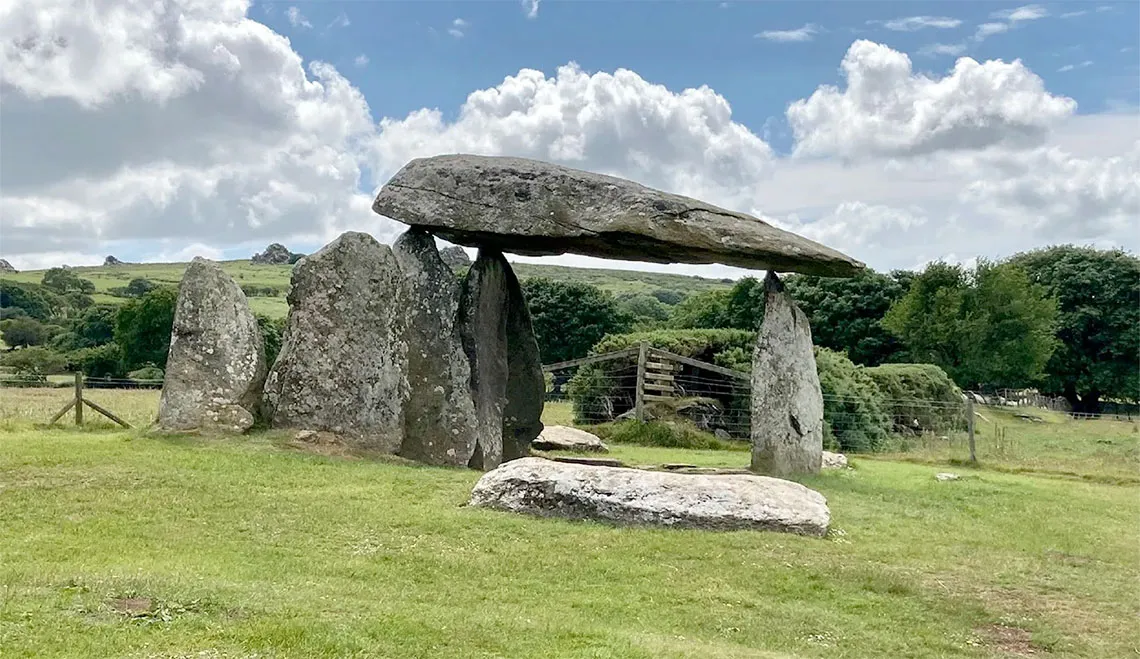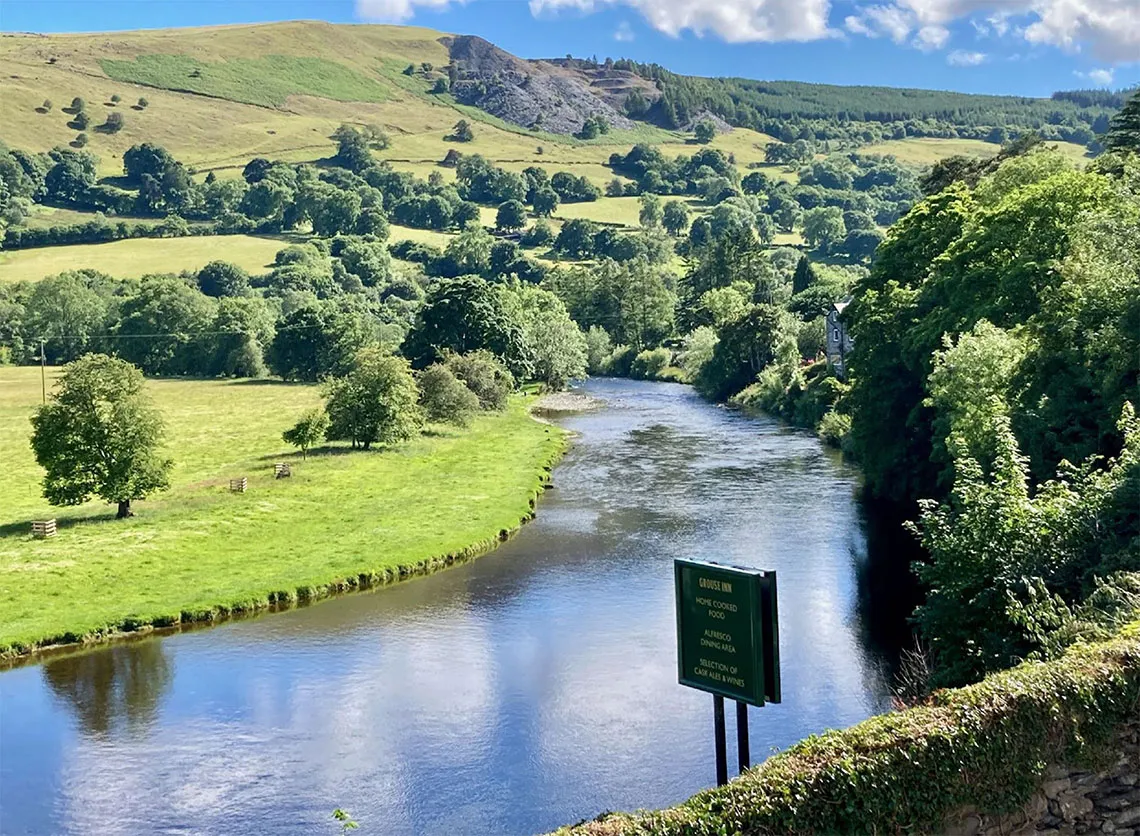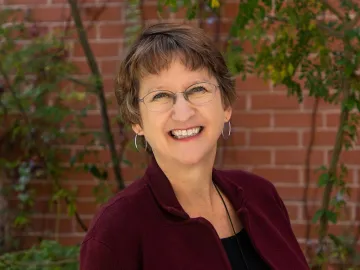Wales on My Mind: Landscape, History, Dwelling

Pentre Ifan (a prehistoric dolmen) near Newport, Preseli Hills, Wales. Photo by Laura Hollengreen.
“It’s the call of a place which combines powerful myths, tumbled landscapes, hardscrabble lives, and proud resistance to normative culture,” writes CAPLA Associate Professor of Architecture Laura Hollengreen for a guest editorial published January 19, 2023 in Terrain.org—the world’s longest-publishing online journal of place.
Sharing her insight through both prose and photography, her thought leadership piece begins, “This past summer I had the pleasure of spending two weeks traveling around Wales. It turned out to be not only the tonic of time in the countryside and small towns, but also a voyage of discovery into the history a somewhat remote but inventive place from antiquity through the 20th century.”

The River Dee seen from the patio of The Grouse Inn at Corwen, Denbighshire, Wales. Photo by Laura Hollengreen.
Hollengreen had been to Wales once before, in 2007, when her “three strongest memories of the trip were all impressions of the landscape.” On her return this summer, however, she realizes that, lately, “in my consciousness, Wales resembles West Virginia, the neighboring but mysterious state to my Virginia.”
In considering the Welsh landscape, history and dwellings on this trip, she found that Wales taught her new things: “In particular, it brought home the fact that the old historiographical model of center and periphery simply cannot hold. At one moment, you can believe yourself to be at the end of the world; at another, you marvel at the huge Bronze and Iron Age fort towns the equal of any elsewhere, or the innovation of the steam engine at work at steel mills, or the “stream in the sky” aqueduct for barges, an early work of transportation infrastructure meant to support the expansion of industrial production in nearby Birmingham. In all these, Wales was a leader, not a follower.”
Read the full guest editorial and view Hollengreen’s landscape photographs at Terrain.org.

Laura Hollengreen, Associate Dean for Academic Affairs and Associate Professor of Architecture.
Hollengreen, who was appointed associate dean for academic affairs at the College of Architecture, Planning and Landscape Architecture in 2019, is an associate professor of architecture. Trained at Princeton and UC Berkeley, she has taught the history of art at several universities and the history of architecture at UArizona and Georgia Tech. While most of her scholarship focuses on medieval topics, she has a longstanding interest in early 20th century artistic and architectural abstraction and the origins of the avant-garde, while her current research centers on a taxonomy of liminal environments. At CAPLA, she has offered courses on concepts of dwelling, landscapes of war, urban public space, museum design and light in modern and contemporary art and architecture.



